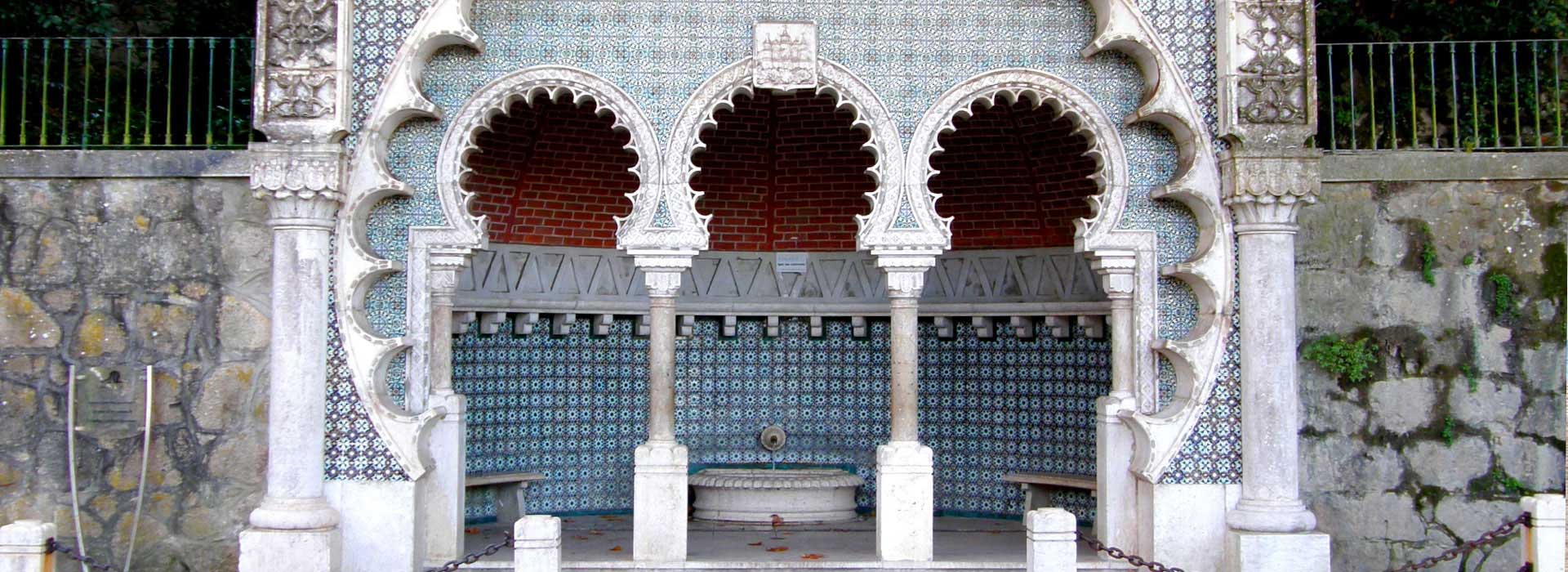
Sintra has been a hub for religious and esoteric practices for centuries, with its mountain associated with lunar deities and mystical waters. Its unique microclimate, shaped by moist Atlantic winds, ensures the town remains verdant and lush, contrasting with the arid landscapes nearby. One notable natural phenomenon, known as the "queen's fart," a wisp of cloud, often hovers over Sintra, contributing to its atmospheric charm.
The abundance of water in Sintra has been essential for its inhabitants throughout history, providing for daily needs and agricultural activities. This precious resource emerges from the mountain's ancient strata, sustaining life and nourishing the land. Celebrated for millennia, water features prominently in Sintra's gardens and estates, such as Pena and Quinta da Regaleira, where exotic plants thrive.
While Sintra boasts numerous public fountains, caution is advised regarding drinking water because of concerns over modern farming practices. Despite this, these fountains remain an integral part of Sintra's heritage, serving as reminders of its rich history and connection to the natural world.
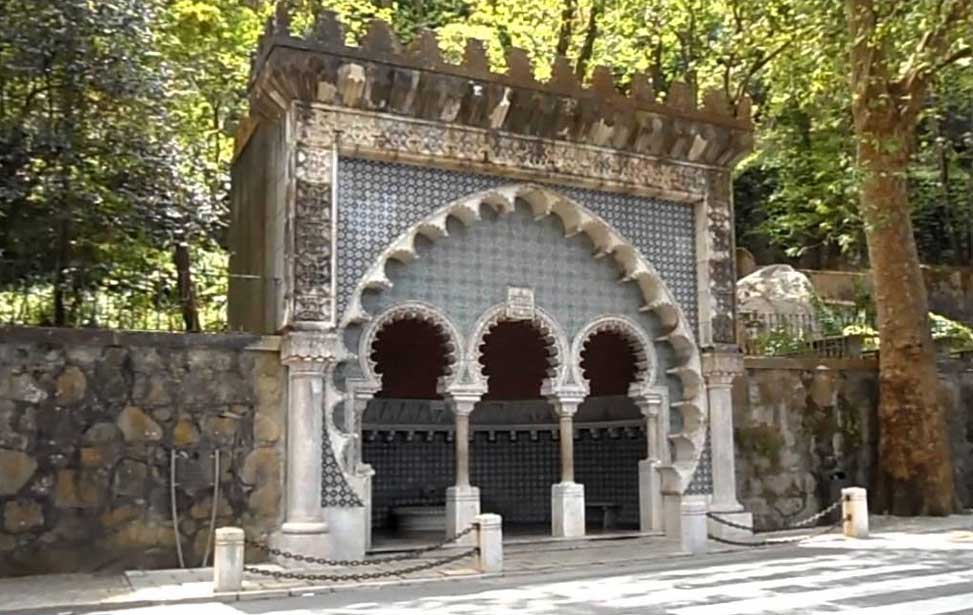
Built in: 1922 | Designed by: José da Fonseca | Location: Volta da Duche
Ironically the most photographed of Sintra's fountains is the youngest. The lavish and ornate Fonte Mourisca (Moorish Fountain) was relocated 20 metres closer to the old town centre. There it served as the townspeople's clean drinking water. The most striking feature of the fountain is its exaggerated arabesque style. Neo-árabe was a popular revivalist style during the later years of Romanticism used extensively at the Palace of Monserrate.
Three large horse-shoe arches form the entrance. Faced inside and out with fine neo-Mudejar azulejos tiles and colourful stucco work. The structure is the creation of Coimbra-born sculptor José da Fonseca, whose family assisted Manini building Quinta da Regaleira. The Moorish Fountain is a UNESCO World Heritage Site.
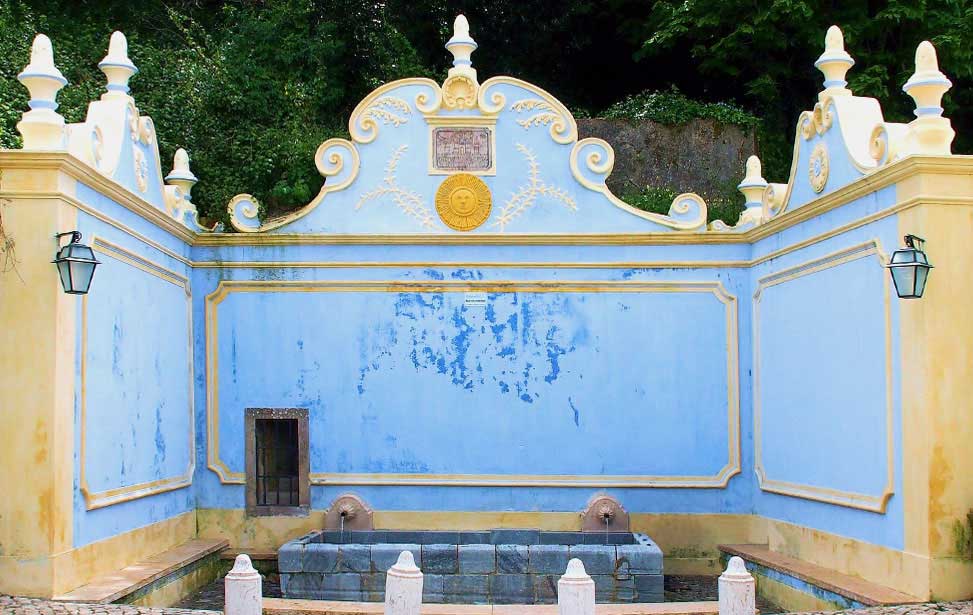
Built in: 1757 | Location: Rua Mal. Saldanha
The waters pouring from here have been renowned for centuries for their medicinal properties. There has been a fountain located here since the Middle Ages. The fountain was mentioned in literature dating from 1406. The fountain we see today dates back to the 18th century. It replaced the original fountain damaged during the 1755 earthquake. The back wall is capped by a large baroque gable emblazoned with a yellow sun disk.
Today the waters are as popular as ever and utilised for its gastrointestinal benefits. In 1946 the 'Águas de Sintra Lda' bottled and sold over 100 thousand litres from the fountain of Sabuga. Legend states anyone who drinks Sabuga's water will remember Sintra forever.
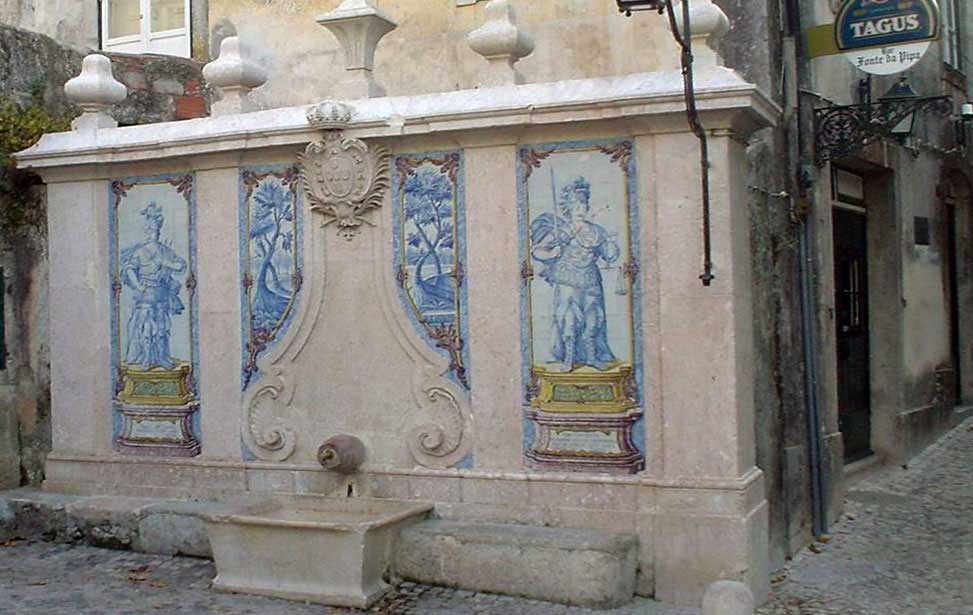
Built in: 1787 | Location: Rua da Fonte da Pipa
Ascending the hill away from the old town centre in a street which bares it's name the Fonte da Pipa has been here in one form or another since 1369. The current construction was made on the request of Queen Maria and has four azulejo panels representing mythological figures and the Sintra forest. The water outlet is in the shape of a wine barrel or "Pipa".

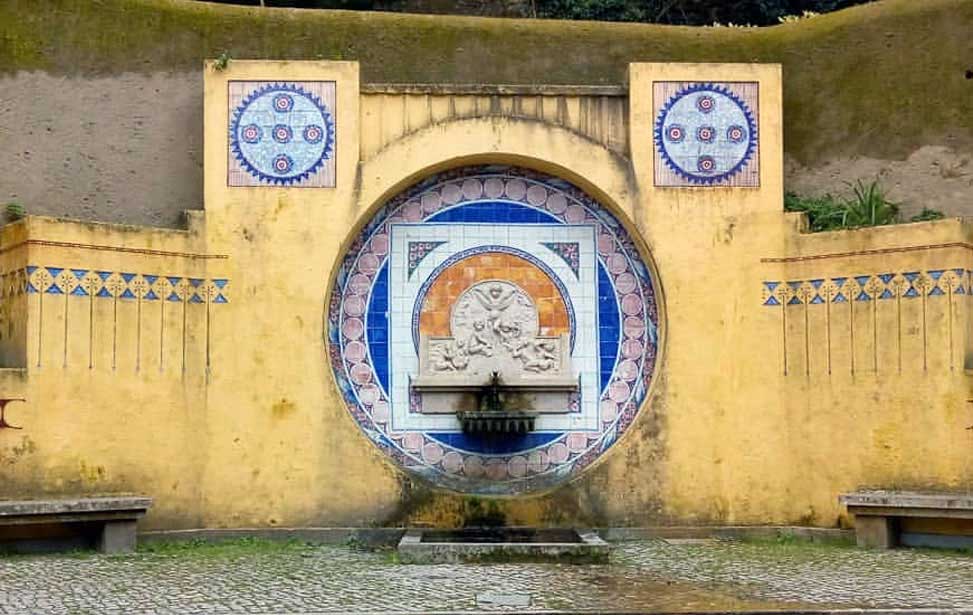
Built in: 1931 | Location: Avenida Almeida Garrett
Located on the road which leads to Quite da Regaleira and the Palace of Monserrate its bright yellow colour makes it difficult to miss. It has a semi-circular courtyard and a circular panel of tiles behind the tap. The overflow tank would have enabled farm animals to drink from here. Today sadly the water source has run dry yet the Fonte dos Pisões remains an interesting monument.

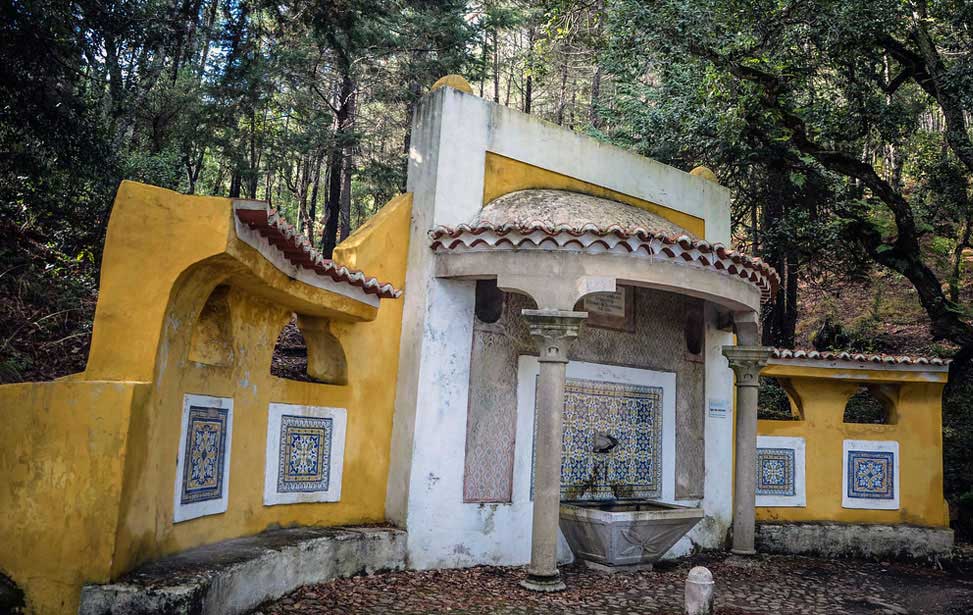
Built in: 1875 | Location: Rua Barbosa do Bocage
Erected by the first viscount of Monserrate, the nearby Palace, and dedicated to the "Good of the People" as inscribed on a plaque in Latin above the tiled splash-back.
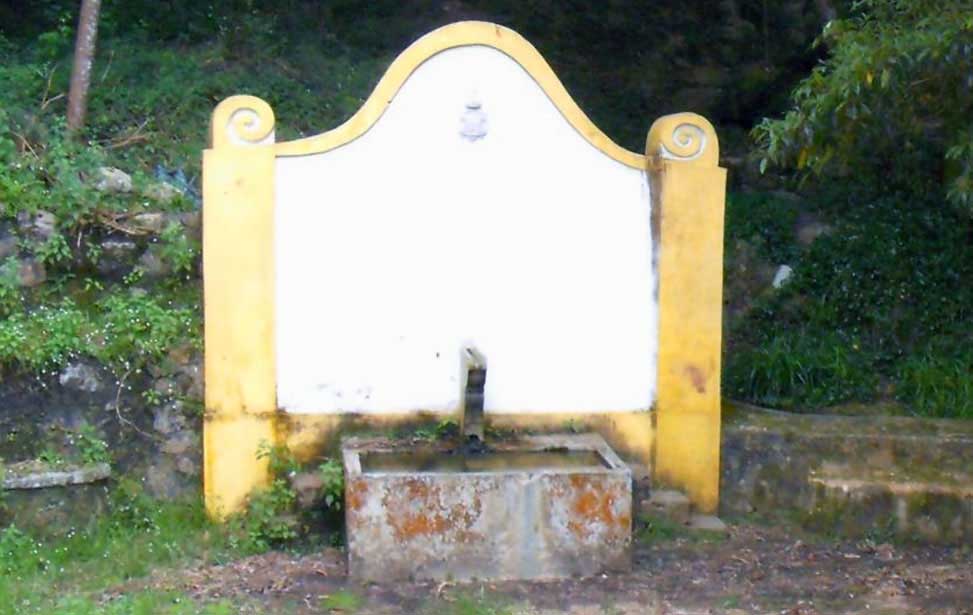
Built in: - | Location: Rua Barbosa do Bocage
Ladrões means thieves and the fountain derives its name from the highwaymen who used to prey on merchants passing here on their way to Colares. The heraldry emblazoned on the gable belongs to Queen Dona Maria 1.
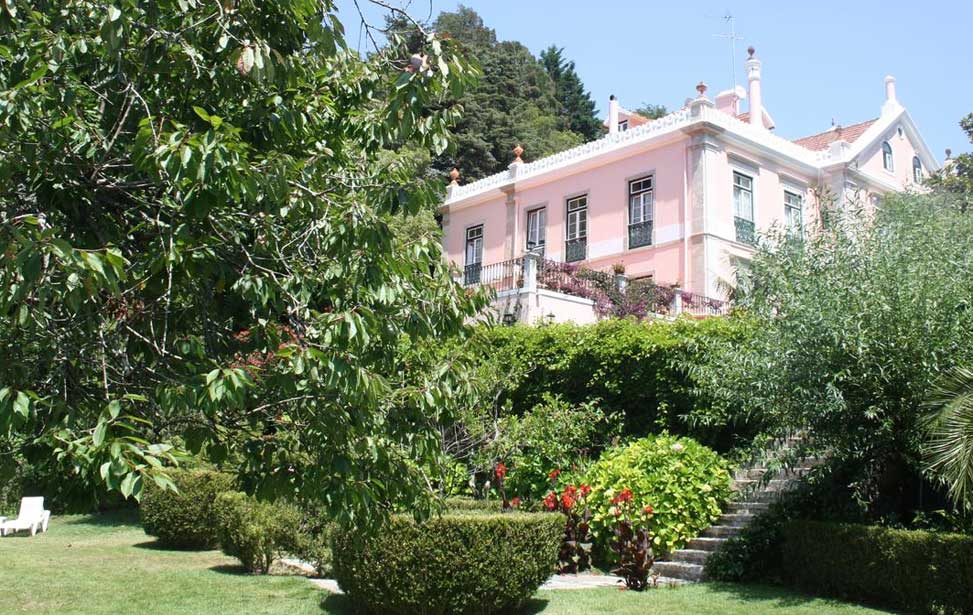
8.9/10 Fabulous (2,357 verified customer reviews)
This 150-year-old residence is surrounded by gardens with a swimming pool and offers a view of the Moorish Castle. All rooms are tastefully decorated and some have unique bathrooms with colourfully painted tiles. Wooden floors and soft colours are standard in each of the rooms at Hotel Sintra Jardim. They also have a work desk and a satellite TV and some rooms have French balconies or garden views.
Breakfast is served in the dining room with its cottage-style windows. The garden with its refreshing pool offers a quiet setting to read a book. Younger visitors can enjoy themselves with table tennis and the small playground.
Largo Sousa Brandão 1, 2710 - 506 Sintra, Portugal. | 38° 47' 39.0" N | 09° 23' 01.0" W
Check Availability

9.1/10 Superb (2,357 verified customer reviews)
Located in the historic centre of Sintra, this boutique hotel offers rooms and suites with views of the old town and Sintra-Cascais Natural Park. It has a landscaped garden where guests can relax at the courtyard bar. Its modern, spacious rooms contain flat-screen TVs and are all individually decorated. Each has a private bathroom that comes with free toiletries. Free Wi-Fi is also provided.
The Sintra Boutique Hotel offers a fine restaurant serving contemporary Portuguese cuisine made from locally sourced ingredients. Breakfast can be prepared upon request.
Rua Visconde De Monserrate nº48, 2710-591 Sintra, Portugal. | 38° 47' 45.8" N | 09° 23' 18.3" W
Check Availability
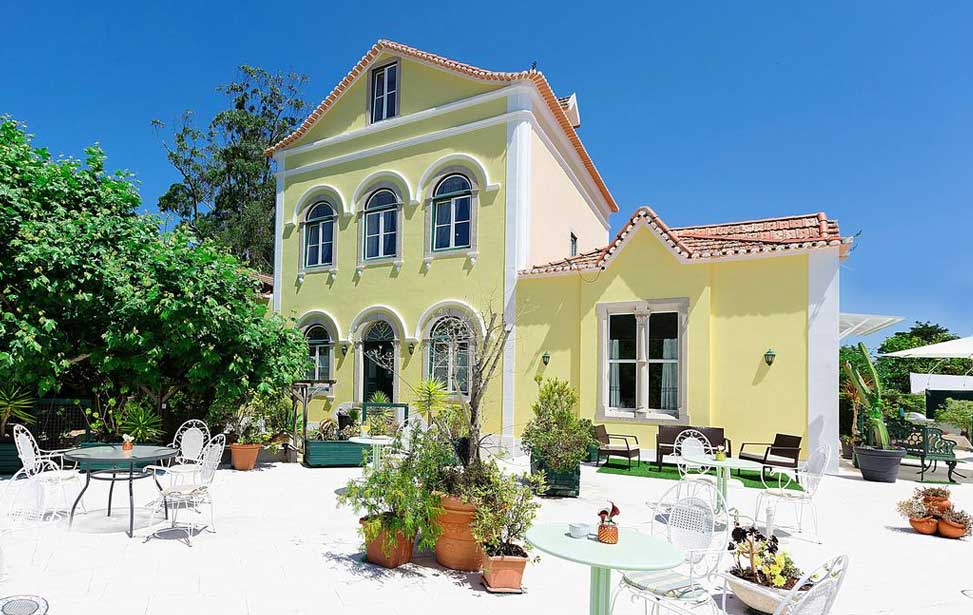
9.2/10 Superb (667 verified customer reviews)
Hotel Nova Sintra is conveniently close to the train station and coach/bus stops in Sintra. The hotel benefits from a large sun terrace overlooking the Sintra Mountain Range and a romantic patio shaded by large trees. It features recently renovated rooms decorated tastefully and free Wi-Fi. The rooms come equipped with a satellite TV. They are all uniquely furnished with decorative headboards and antique furniture.
Guests can enjoy breakfast on the patio or the sun terrace. Indoors there is a small living room that also functions as a restaurant and lobby area, serving traditional Portuguese dishes. The villa is situated a short walk from Sintra Old Town.
Praça da República, 2710-616 Sintra, Portugal. | 38° 47' 49.9" N | 09° 23' 27.3" W
Check Availability